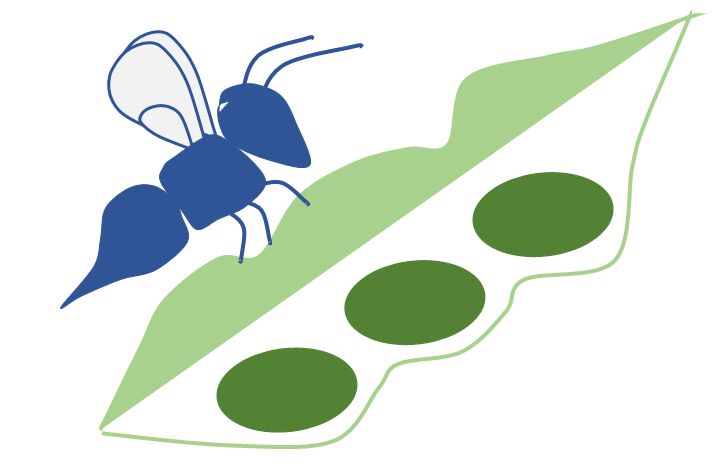Most crops suffer from insect pests of some variety: aphids, mealybug, flea beetle, etc. However, crops and their pests form part of a wider ecosystem; just as the pest eats the crop, so other animals will eat (or parasitise) the pest.
Here are just two examples:
The predator
Ladybird beetles (ladybugs, lady beetles) (Coleoptera: Coccinellidae) are important predators of pests including aphids and whitefly. Species of ladybird can be found across the world. Both the adult (A) and larval (B) stages of many species of ladybird are predators, meaning they eat pests throughout their entire life cycle. Ladybird beetles range from large species like the common (and invasive) Harmonia axyridis to the tiny Clitostethus arcuatus.
Other predators include lacewings, Syrphidae (hoverfly) larvae, robber flies, long-legged flies, paper wasps and ants.
It is important to remember vertebrate natural enemies can play a role too: birds, bats, lizards and geckos and shrews can all play a role in reducing pest numbers in ecosystems.
The parasitoid
Parasitoids are species of wasp or fly that lay their eggs inside another animal, and their offspring develop inside, normally eventually killing their host. Parasitoids can be powerful tools in sustainable agriculture to control some pests. Many parasitoid species are tiny wasps in groups including Chalcidoidea and Braconidae. However, some flies (e.g. Tachinidae) are also parasitoids. The life history of parasitoids can often be fascinating and complex, involving multitrophic interactions with plants and other parasitoids. When a pest is parasitised, it does not die immediately, but its behaviour can change rapidly. It may climb to the top of the plant, or stop moving entirely. Some pests will change colour:
[image coming soon!]
Healthy Aleyrodes proletella whiteflies, and the same species parasitised by the wasp Euderomphale chelidonii.
Aphids that have been parasitised may become mummies:
[image coming soon!]




